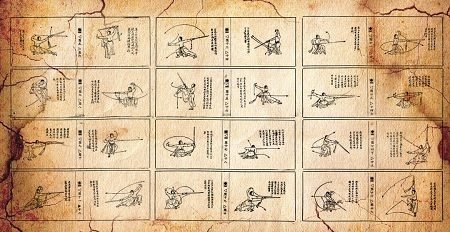Learning a Martial Art- some basic guidelines
I think we have by now come across a couple of people who are studying some martial art or the other on their own.
Back when I tried doing it at the age of 10 I used a book and later more books followed.
Well- even after I did join an actual dojo more books followed even then...

People are quick to say that you can't learn a martial art from a book.
That is understandable. I for one know that you can't work as a lawyer if you have only gotten your law degree. In fact- few people feel as incompetent as a bright graduate starting out as a candidate at a law firm.

The main reason why martial arts can't be learnt by reading alone is that experience plays a large part in developing the skills that any martial art has to offer. Knowledge is not enough.
Nonetheless- self study is possible. We may argue about to which extent, but the history of Chinese and Japanese martial arts feature instances where people studied a scroll or a form passed down to them and attained a measure of proficiency.
It also has to be mentioned that past knowledge, which is passed on, is only part of the learning process. One's own experience makes up a major part of what you learn and how good you actually get at your chosen style.
Now- from my experience- here are some guidelines to learning a martial art, whether you are studying by yourself, or at a school.
1. Suppress the urge to show off
With this I can also say- stay out of fights!
Really- it may be tempting, but showing off is a bad idea. Last time I have read about WTF Taekwondo it was said that competitions in this sport were reserved for only black belt students. I will not be surprised if it has changed since the 80's, but the reason behind this policy is understandable. Many martial artists will tell you that you are not combat ready in that stage of learning the basics of an art.
During the learning process circumstances are controlled and the unpredictability of the world outside of training cannot mess up your performance. Real life, however, has a nasty habit of messing things up when you least want it.
If you planned to just show how high you can kick or something like that- well... You have to bear in mind that most non-martial artists are non-martial artists because they simply don't care about stuff like that. Fortunately, in this day and age we have martial arts groups in social media, though...
2. Don't just look at the pictures
Who has seen Crouching Tiger Hidden Dragon?
It was funny to see that this mistake could be made even in the Jianghu days of China. It gets made a lot these days as well. The same could actually be said about copying from movies or Youtube videos. Whether martial arts teachers tell you this or not, martial arts techniques have external aspects, which can be observed by just looking at the person performing a technique, and internal aspects, which are those things that can't be seen from the outside, but which are felt by the exponent performing a technique.
I have to mention, however, that in many, and I mean MANY cases, the text of a book or the explanation in a tutorial video does not even touch on the internal aspects of a technique.
I have to mention, however, that in many, and I mean MANY cases, the text of a book or the explanation in a tutorial video does not even touch on the internal aspects of a technique.
Fortunately- internal aspects of a technique can sometimes be gleaned from regular practice and pressure testing. Still- having a good teacher is the best way. Next best would be really good source material.
3. Start with the basics
Every martial art has basics for a reason. Karate, for instance, has enough basics to fill 9 Kyu grades- those grades of which the belt is not black. Learning to do a certain punch or kick properly, for instance, is one thing. Then it is necessary to learn to combine the technique with others. Later on- in a sparring situation- one has to learn to do these techniques as a fight requires.
4. Having mastered the basics does not yet make you combat ready
A basic guideline is that as long as you still have to think before you deliver a technique you cannot fight. Whether you practice a martial art for enlightenment or to defend yourself- free sparring is the test of your level of accomplishment. People who still have to think before they punch and kick in a fight lose. Those are also people who have not yet attained the Zen state of Mushin in their attacks and defense. Whether you are learning a Russian martial art or a Japanese one- you need this level of accomplishment to at least master the fundamentals of any martial art.
5. Physical training is a must
I remember that Tom and Jerry cartoon where the baby mouse (not Jerry) learns "Bat-Itsu" from a video by his hero Batmouse and then immediately goes and flips Tom around.
Reality, however, is that fighting takes strength and in many instances stamina. Then things such as flexibility and agility also play a big part.
You may have been blessed with some of these things, but physical training is an integral part of martial arts study that cannot be avoided.
Well... I have said as much as I can on the subject. Anyone who has something to add is welcome to comment.
Wishing you all a great week ahead!








Comments
Post a Comment